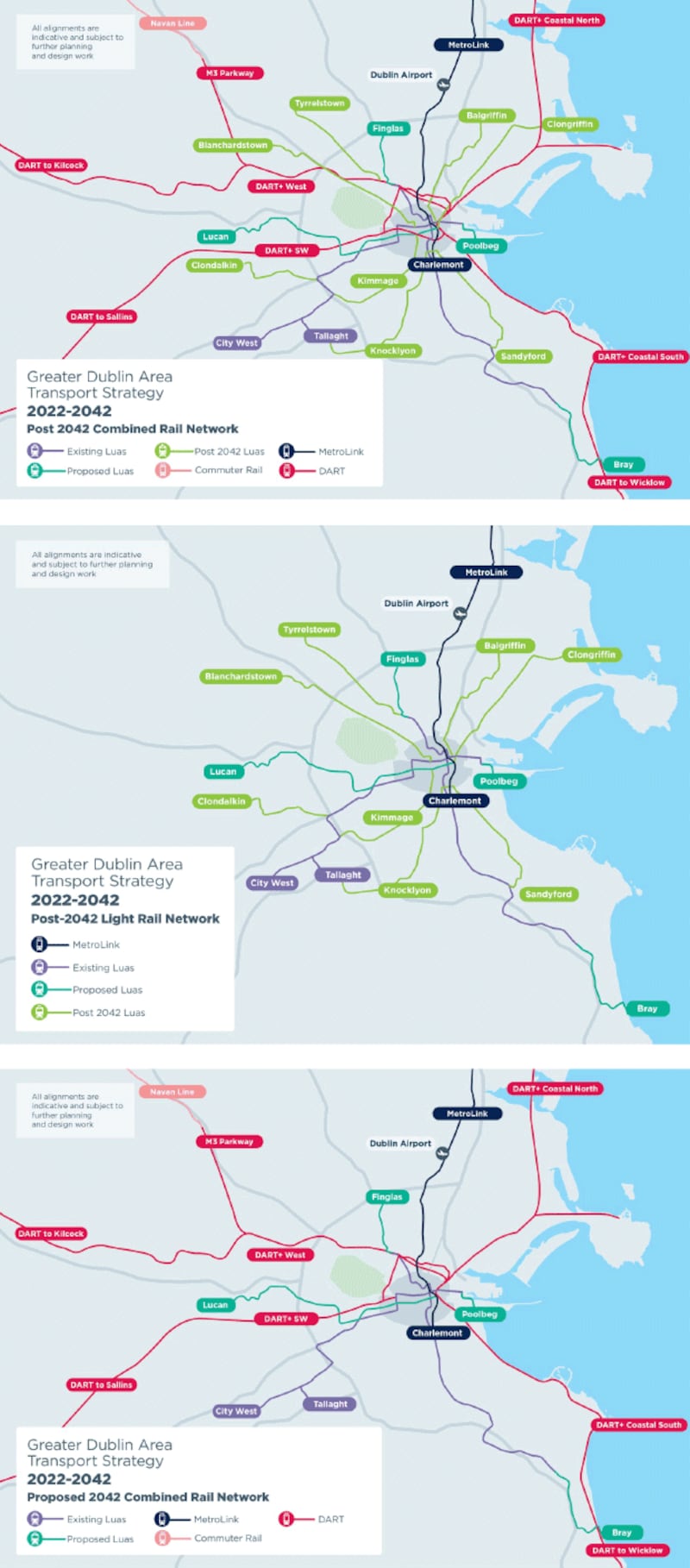Any rail transport map of Dublin will depict a significant gap in south Dublin between Tallaght and Sandyford.
This area of the southside stretching from Portobello to Knocklyon includes the middle-class suburbs of Rathmines, Rathgar, Terenure and Rathfarnham.
It is materially rich, but with poor public transport. There is no light rail link and buses have to navigate such notorious traffic choke points as Terenure Cross, Harold’s Cross Bridge and Rathmines.
The greater Dublin area draft transport strategy, which was published on Tuesday, would suggest that scenario is not going to change any time soon.
A Luas line might be built to Knocklyon, but not before 2042, at the earliest. A proposal to build a MetroLink spur to Rathfarnham has been ruled out as being too expensive. “The benefits of the project were less than the cost,” National Transport Authority (NTA) deputy chief executive Hugh Creegan has said.

In the southwest corridor, commuters will have to be content with bus routes through Kimmage/Harold’s Cross and another through Templeogue/Rathfarnham to the city centre. These two schemes have been fiercely opposed by many residents in both areas because of the traffic disruption they will likely cause.
Bottlenecks
Eugene Barrett of the Metro South West steering committee, an organisation which represents 39 residents’ associations in the area, said BusConnects will only increase capacity by 10 per cent and do nothing to alleviate the bottlenecks, which can lead to a bus journey taking an hour from Knocklyon, Firhouse or Rathfarnham to the city centre.
“It is not enough to take people out of their cars,” he said. “The NTA did not look at other solutions. They think buses are going to solve the problem. There are nearly 60 buses going through the Terenure crossroads every hour. You are not going to get any more on that stretch.”
Pauline Foster, a resident of Terenure, said public transport improvements in the area were proposed as far back as 1995, with a bus corridor through Kimmage Manor, which never happened.
This was followed by glossy brochures in 2002 announcing a metro for the southwest area.
“We are worse than at square one. We are going nowhere,” she declared. “There is nothing in it for southwest Dublin for the next 20 years at least and you can add that to the previous 20 years. There has been no advancement in public transport. I will be six-feet under before anything happens in this area.”
Former Sinn Féin councillor Sarah Holland, who is a resident of Ballyboden, said “it beggars belief” that a rail link is not being proposed for one of the fastest-growing areas in Dublin. She tabled a motion at council level in support of a MetroLink through Rathfarnham in 2018.
Public transport
“There is a huge amount of building going on in the Ballyboden, Scholarstown area, but there is no public transport plan to go with it. It’s already log-jammed,” she said.
“There are already far too many cars on the road. Each one of these developments could be looking at two cars on the road, so you are looking at thousands of more cars.”
Dublin Commuter Coalition spokesman Feljin Jose said it wanted an upgrade to the green line, doubling the capacity, and a MetroLink to Rathfarnham. The coalition got neither.
He said that the NTA plans are “not exactly ambitious”.
“We are looking at 2050, and beyond even, [to see] if these Luas lines are deemed to be feasible. It’s disappointing,” he said.
*This headline was changed on November 11th 2021









